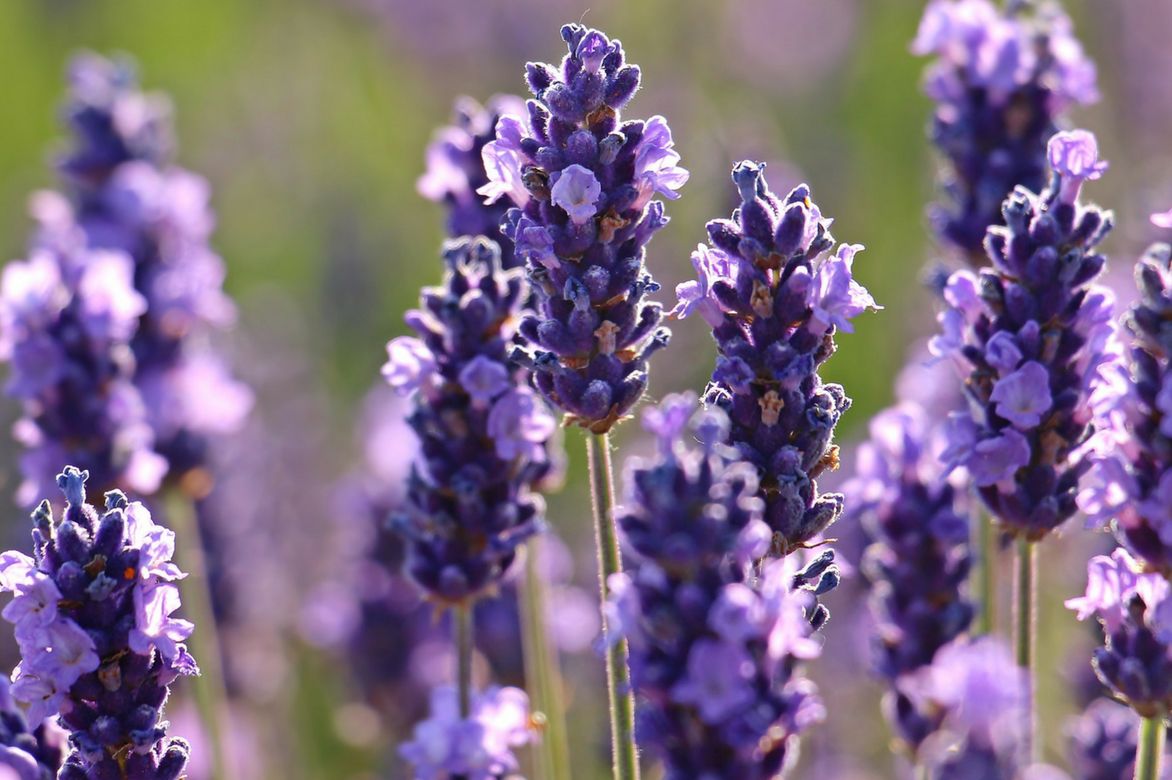
Lavenders: the safe bets
Discover 7 varieties of lavender that are easiest to grow
Contents
Lavenders have their place in all styles of garden, both natural and modern. They highlight flower beds and define pathways with great efficiency and elegance. Robust beautiful scented cushions, the currently extensive range allows for their use well beyond mediterranean climate zones.
Here is a selection of 7 lavenders, our “sure bets” that will suit all gardens, regardless of their size, style, or climate.
Lavender 'Hidcote'
Originating from Western Europe, it is more tolerant of humid growth conditions, which is why it is cultivated in England, but it also thrives in Mediterranean climates. A large part of its fame across the Channel comes from the fact that it was created in the 1920s by Lawrence Johnston at his Hidcote Manor in Gloucestershire. It is ideal for creating long-lasting borders and hedges.
Compact, sturdy and very hardy, this lavender offers dark purple flowers. The grey-green leaves are slightly wider than those of the Lavandula angustifolia type and change slightly in colour throughout the seasons. This famous variety of highly fragrant lavender produces two flowerings in spring and autumn. The Lavandula angustifolia ‘Hidcote’ produces numerous blue-violet spikes that are often used in dried flowers to fragrance cupboards and linen. Even its grey-green foliage is highly fragrant. This beautiful, very compact lavender (mature height 60 cm, mature width 75 cm) is perfectly suited for a small, dense trimmed hedge. Exposed to sunlight, it is a sub-shrub highly appreciated by bees.

Lavandula angustifolia ‘Hidcote’
Read also
Lavender: planting, growing, pruningLavender 'Munstead'
This essential variety was developed around 1916 and is named after the famous cottage, Munstead Wood, of Miss Gertrude Jekyll in Surrey.
Dwarf lavender with very bright blue-violet flowers and grey foliage, Lavandula angustifolia ‘Munstead’ is one of the hardiest varieties. Its habit is looser and its flowers are a lighter colour than those of the ‘Hidcote’ variety. Another advantage is that it is more resistant to hot summer temperatures than other English lavenders.
Like lavender ‘Hidcote’, the ‘Munstead’ variety is more tolerant of cold, winter wetness and temperature fluctuations (resistant down to -15°C). It is also ideal for borders or low hedges and can be grown for culinary purposes.
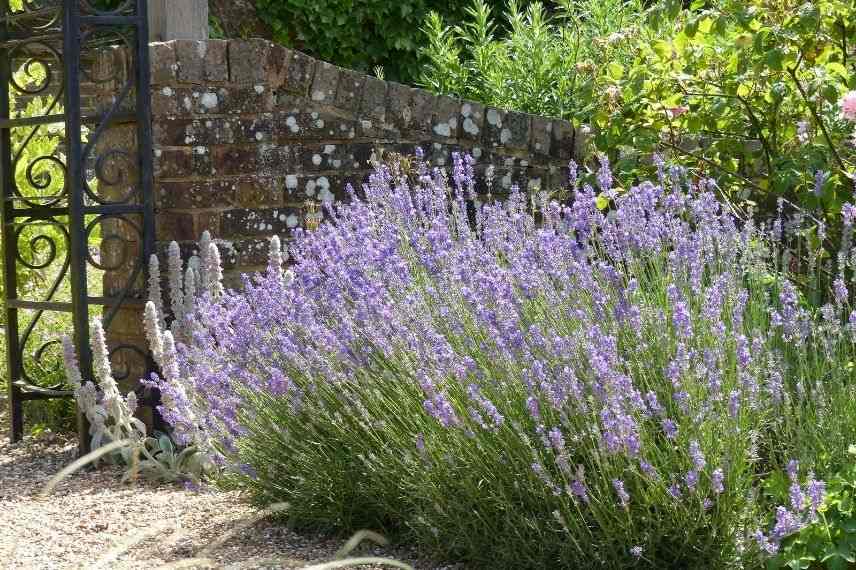 Lavandula angustifolia ‘Munstead'[/caption>
Lavandula angustifolia ‘Munstead'[/caption>
Eric’s tip: If you have a problem with deer, surround your vegetable garden or rockery with a wide, well-stocked hedge of lavender. Deer dislike perfuming their feet, as it hinders their ability to detect predators or find food.
Discover other Lavendula - Lavender
View all →Available in 2 sizes
Available in 4 sizes
Available in 2 sizes
Available in 0 sizes
Available in 0 sizes
Available in 3 sizes
Available in 3 sizes
Available in 1 sizes
Available in 6 sizes
Available in 4 sizes
Lavender 'Bleu de Gien'
Fragrant plant, leaves and flowers, it features beautiful evergreen green foliage that does not stain in winter. In fact, this very young variety (2017) is beautiful all year round.
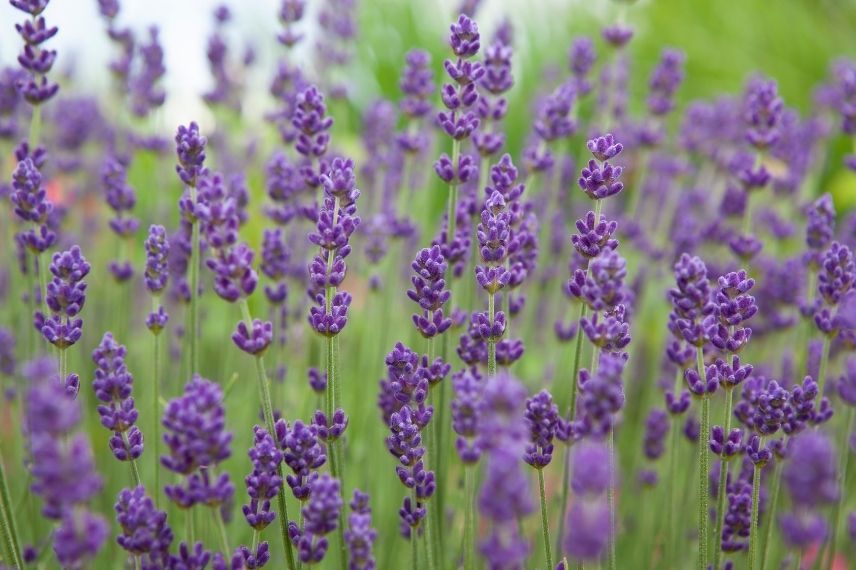
Lavandula angustifolia ‘Bleu de Gien’
Read also
Lavenders: the most beautiful varietiesLavandin 'Dutch'
This lavandin Lavandula x intermedia ‘Dutch group’, with silver-grey, narrow and aromatic leaves, is regarded as the hardiest. The fine and dense spikes of pale blue-mauve fragrant flowers appear in June and can persist until September. This incredibly robust and heat-tolerant variety, thanks to its long silver-grey leaves, is cold and disease resistant. Lavandins also grow much larger quickly and are better suited to handle extreme heat. These plants are exceptionally rich in oil, resulting in intensely fragrant foliage and flowers. An excellent way to bring fragrance to the garden or grown in pots on a terrace or balcony.
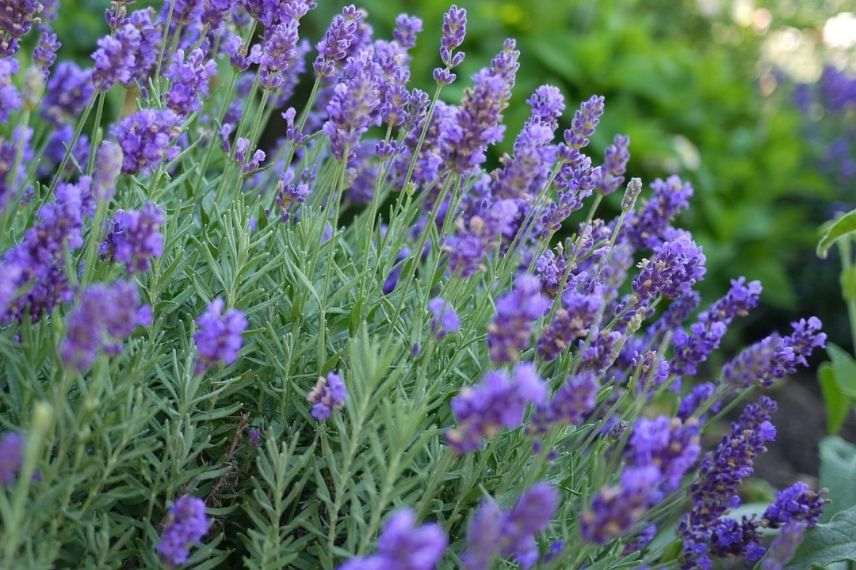
Lavandula x intermedia ‘Dutch group’
Lavandin 'Grosso'
The lavandin ‘Grosso’ vigorous, with a compact habit, is particularly floriferous. The grey-green foliage is topped from June with a flowering of long spikes adorned with abundant and fragrant mauve-blue flowers. It flowers longer than many varieties, reaches its finest appearance from July, and maintains a proud look until early autumn. It is well suited for creating regular borders that remain beautiful all year round. A hedge of Lavandula ‘Grosso’ is slightly taller than some varieties, reaching about 90 cm from the ground to the tips of the floral spikes. Hardy to temperatures down to -15 °C, it is important that the soil is well-drained. If the soil is heavy, it is better to plant your hedge of lavandin ‘Grosso’ on a shallow mound to avoid stagnant water that could be fatal. Like all lavenders, it requires a spot in full sun ideally, although a touch of shade for part of the day is acceptable.
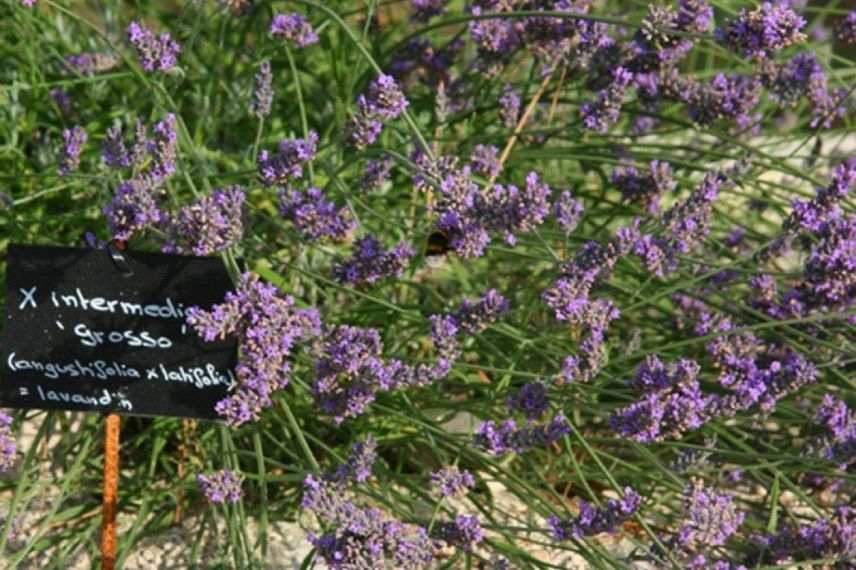
Lavandula x intermedia ‘Grosso’
Lavender 'Phenomenal Niko'
This recent cultivar has been created to satisfy all gardeners. Indeed, Lavandula angustifolia ‘Phenomenal Niko’ thrives both in resisting the effects of cold, damp winters and in enduring the heat of the driest summer. The flowers, with their pronounced blue-purple spikes, are as elegant as the evergreen foliage of a beautiful green. This new variety of lavender is very hardy, even in wet winters, and is an improvement on the ‘Grosso’ variety. Its compact habit (70 cm high and 70 cm wide) makes it ideal for use in pots on a terrace or balcony. It requires a sunny position in well-drained to light, even poor and dry, soil or substrate. Unlike many lavenders that become bare in the centre as they age, it maintains its lovely spherical shape. This beautiful lavender, with its abundant floribundity deserves to be known even in regions north of the Loire due to its cold resistance down to -15°C.
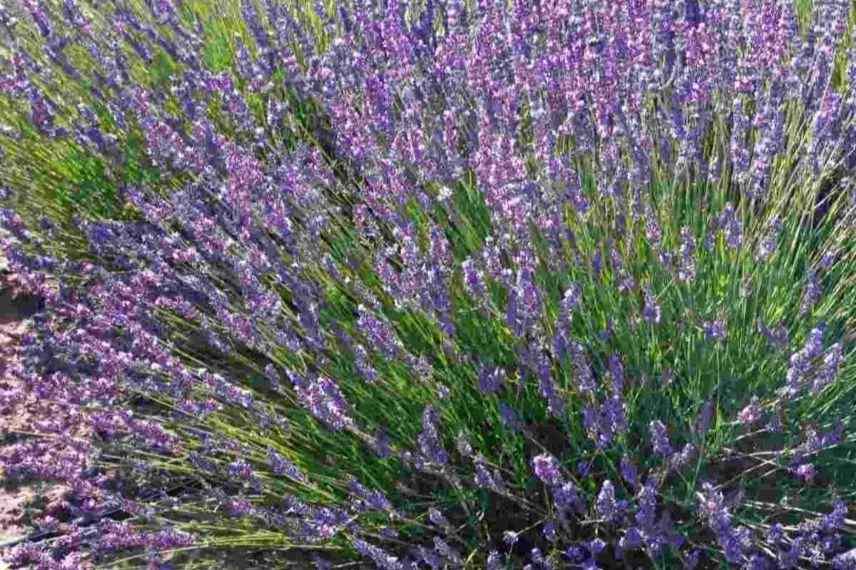
Lavandula angustifolia ‘Phenomenal Niko’
Lavender 'Essence Purple'
Lavandula angustifolia ‘Essence Purple’ has also the particularity of flowering all summer long. Its flowers are deep bluish-purple with a purple calyx. Its light green foliage is highly fragrant. A small shrub, shorter and more compact than true lavender or common lavender, this lavender fits beautifully into any garden as long as it can enjoy full sun and well-drained, even poor, soil. Very hardy, tolerating winter temperatures down to -15°, it produces excellent results in pots. It is ideal for its dimensions (height at ripeness 50 cm, width at ripeness 60 cm) to formsmall low hedges in the vegetable garden or borders along pathways. Its evergreen foliage and spreading low habit ensure, in all the hard-to-reach areas of the garden such as banks, it creates a beautiful decorative effect that requires little care. Even in mid-winter, this rounded lavender catches the eye when the garden is at rest.
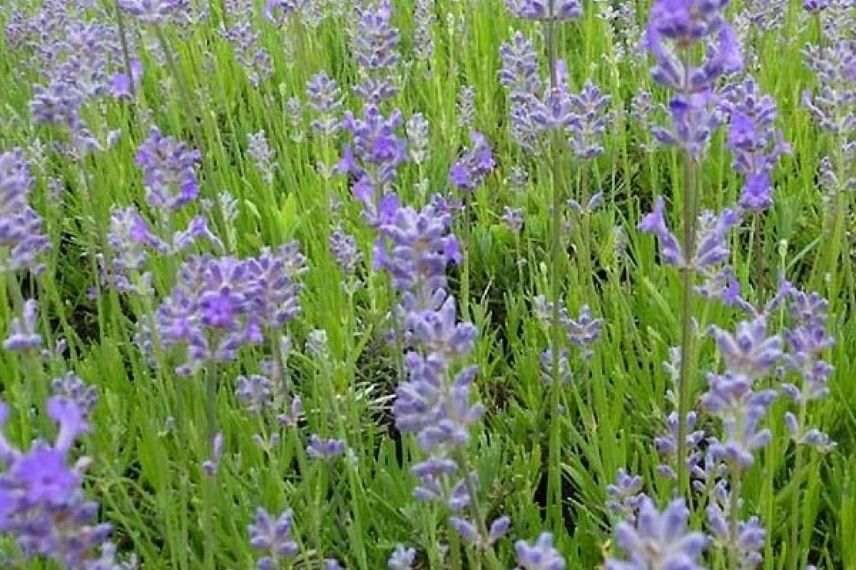
Lavandula angustifolia ‘Essence Purple’
For further reading
- Discover all our tips in our comprehensive guide: Lavender: planting, growing and pruning.
- Explore our ideas for pairing lavender in the garden.
- Subscribe!
- Contents
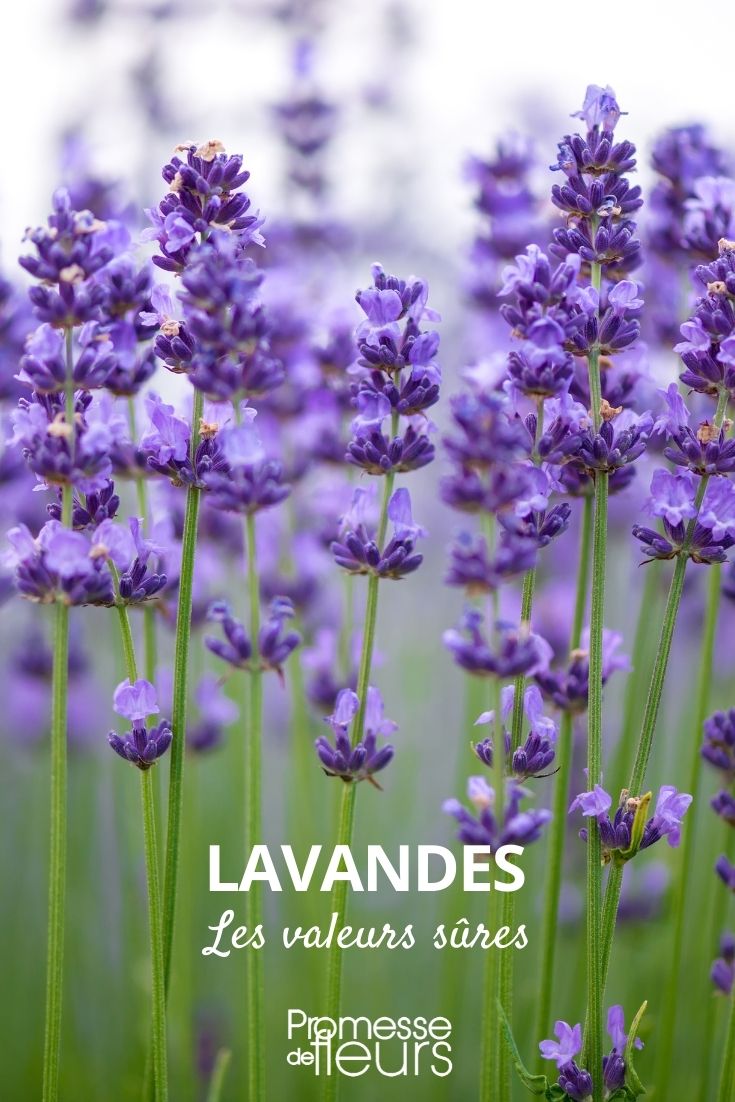































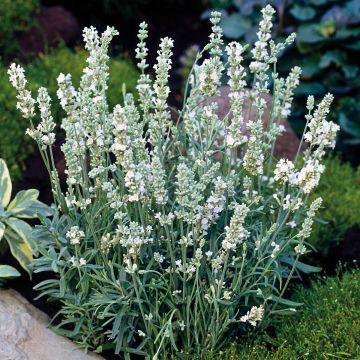




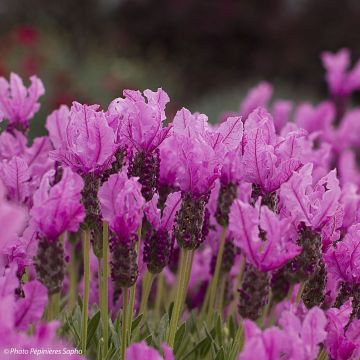
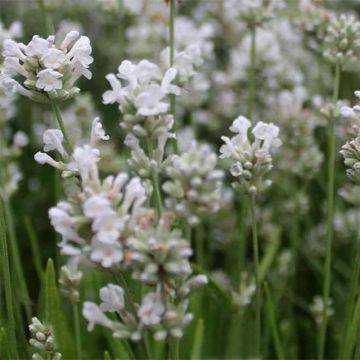

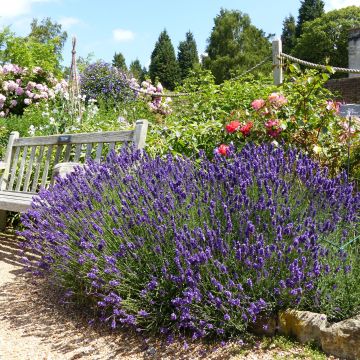
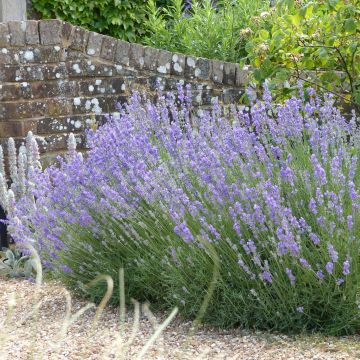
Comments